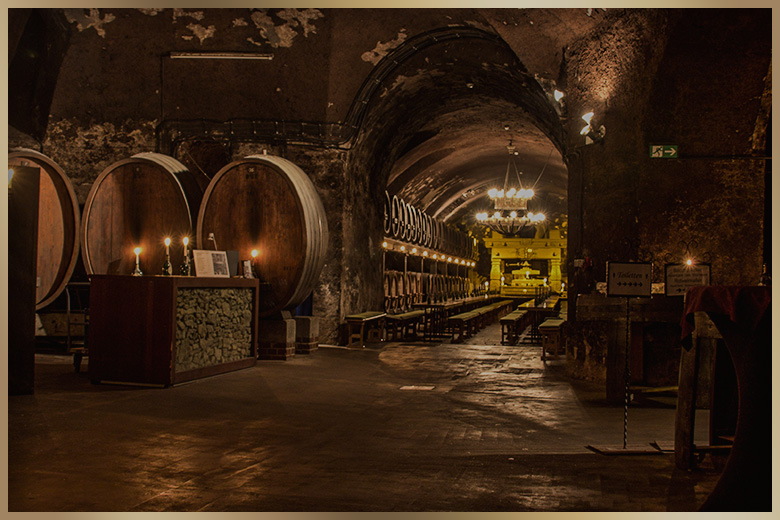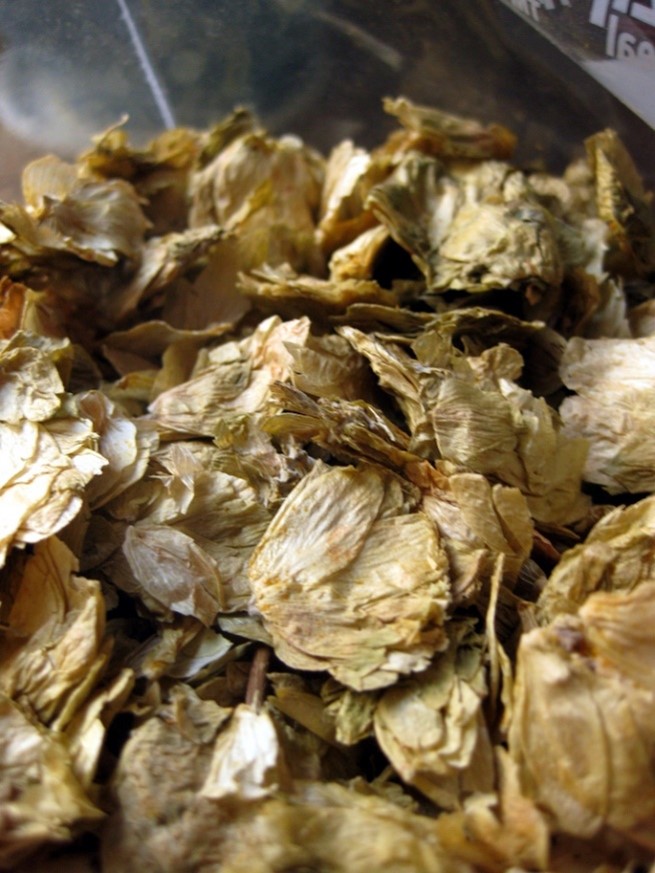How to use "old" hops? In spontaneous fermentations of course!

article written in collaboration with Alexandra Berry
Brewers have a natural reflex to select their hops: choose the freshest and most aromatic hops possible. Indeed, with time and especially with the contact with the air a hop can oxidize, and thus lose its aromatic oils, but also its acid components which give the bitterness to the beer.
What to do with your old hops ?
These will be invaluable when brewing a spontaneously fermenting beer or one that is to be aged in a barrel. Let's explore why!
Before continuing, let's be careful to differentiate between a spontaneously fermented beer (also called wild) and a sour. A sour beer is a beer that, as its name indicates, has been acidified; either artificially or by spontaneous fermentation. A sour beer can be very bitter in addition to being acidic, extremely Aromatic without any spontaneous fermentation. It is a brew that has been acidified (with lactic acids for example) in order to give sour notes to the finished beer.
Here we will talk specifically about the hops in beers of spontaneous fermentation, or wild, whose fermentation will have been produced thanks to the indigenous yeasts present in the natural environment of the brew. This fermentation can be done in the open air (the case of lambics for example) or in barrels. These beers are generally seductive thanks to their acidulous notes, to the woody touches if they have been aged in barrels and by their rather farmhouse nuances. They will therefore offer little or no bitterness and you will not find the fruity aromatics found in some hopped sours .
A traditional Belgian lambic is fermented spontaneously thanks to the microbes present in the air before being aged. A Gueuze will be composed of a blend of lambics aged from one to three years. The hops will not have any properties Aromatic or bittering. The purpose of these styles is to highlight the yeast and possibly the woody nuances conferred by the aging.
Hops are not at the forefront of the wilds.
On the contrary, the brewer will take care to limit the creation of bitterness and must therefore carefully select and handle the hops.
Enter aged hops, aged or over-aged hops.
What is aged hop?
An over-aged hop is one that has been oxidized by long or severe contact with oxygen. Indeed this ageing will cause the oxidation of its acids and oils. In general, brewers try to avoid this by keeping their hops under vacuum (or even under a protective atmosphere in the best case) in the refrigerator or freezer in order to preserve the freshness, the alpha and beta acids as well as all the oils present in the cones and pellets. This is the best way to produce aromatic and richly bitter brews.
For a sour, especially of spontaneous fermentation type Lambic or Gueuze, fresh hops would not be appropriate and would constrain the acidification of the brew.
Oxygen is the most important factor for the "degradation" of hops, but the ambient temperature and the humidity level will also contribute to its aging. The alpha and beta acids oxidize and produce more astringent aromas, some even recognize cheese aromas!
Dried and aged hop cones
Source: https://www.themadfermentationist.com/2011/05/american-lambic-spontaneous.html?m=0
Why choose aged hops in a wild?
Since a spontaneously fermented beer will often be heavily exposed to ambient air, oxygen and bacteria, it will not be able to retain the oils, acids and aromatic properties of the hops anyway. It is therefore unnecessary to add fresh and aromatic hops to a brew that is to be acidified or aged in casks or barrels.
Don't expect to find green, floral or fruity hop aromas in your glass of wild (except for one that has been hopped raw). These fresh aromas will be replaced by stale, farmhouse or earthy notes that lend themselves perfectly to the traditional lambic style. The bitterness of the hops will be much less because the alpha acids will have been degraded by the oxygenation of the beer. Ideal for a spontaneous fermentation beer!
However, overaged hops still retain their antimicrobial properties and can thus help preserve the beer. The cones or pellets still help regulate lactic acid bacteria and control acid production in the brew, especially in mixed or spontaneous fermentation brews.
Finally, while the IBU of the hops will never be very high in these styles, a slight touch of bitterness can help create wild saisons or slightly acidic "farmhouse ales" for experimental styles.
The Kernel brewery produces good examples of spontaneously fermented farmhouses, often with fruit, which still have a real bitterness in the mouth! A textbook case for fans of this style.
Jeff Stuffings, brewer of Jester King, also prefers aged Hops for his rustic saisons. He explains his process here: https://beerandbrewing.com/video-tip-embracing-hops-for-farmhouse-ales-and-table-beers/
How to choose your hops ?
Belgian brewers tend to favour European hops, so-called "noble" hops with rather green, spicy and earthy nuances (Tettnang, SaazTarget or Hallertau). Most brewers prefer cone hops to pelleted hops. If you want to use pellets, it is advisable to grind them to optimize their oxidation. Some brewers age them for up to three years in a rather warm environment.

Hops Perle that age at Cantillon.
https://www.lambic.info/Brewing_Lambic
Unrefrigerated hops stored in contact with open air for six months can also be used for brewers with less storage space. The main thing is the contact with oxygen to oxidize - precisely! - the cones or pellets.
Ask your hop supplier if he has any old crops to sell you! Often cheaper than fresh hops, you can find some real nuggets for your brews.
For those who can't or don't want to age their hops, you should bet on pellets or cones with the lowest possible alpha acid content.
Hops can be aged in cones or pellets, as long as they have been properly dried beforehand. Be careful, you should not age "fresh hops", hops that have not been dried. These will just get moldy!
How to brew with these hops?
Some lambic brewers add their hops very early in the brewing process, directly into the wort(first wort hopping) or as soon as the wort is boiled to provide bitterness, polyphenolic antioxidants and bacterial resistance to the wort cells. The long toasting will allow the isomerization of the alpha acids and thus the creation of bitterness without preserving the hop aromas. Thus, a lambic that has just been brewed can be surprisingly bitter. Bitterness calculations should be done using the original alpha acid analysis of the product, not the most recent one.
Hops can be added to the brew in bulk, in mesh bags or via custom designed dosing systems.
Due to the oxidized nature of aged hops, it is not recommended to add them in the whirlpool or after boiling. Adding them on the cold side ( dry hop) will not help because of the oxidized nature of the hops (no input Aromatic).
The spontaneous fermentation that follows will create the acidity and give the lambic its spicy, earthy or slightly woody notes.
Cantillon uses hops that are about 3 years old. 3 Fonteinen adds 10 year old hops at about 48 minutes of boiling. The average hop dosage for a lambic is 450gm/hl of finished beer, to be added at about 43 minutes of boiling.
In short, it's your turn to brew!
Sources :
https://www.mobcraftbeer.com/2017/05/26/aged-hops/
https://www.milkthefunk.com/wiki/Hops
https://www.mobcraftbeer.com/2017/05/26/aged-hops/
https://www.themadfermentationist.com/2011/05/american-lambic-spontaneous.html?m=0







